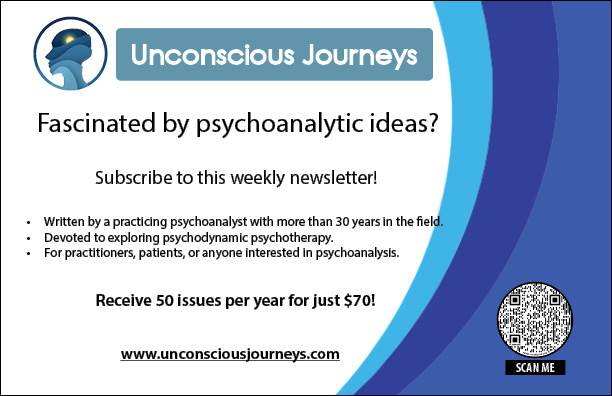The Assumptions Required for a Unified Model
Pasadena, California
February 7, 2016
Dear Readers,
Any effort to unify clinical psychoanalysis requires one basic assumption: Theories of mind must be considered a source of metaphor, not of truth. Wallerstein (2013) proposes the same idea, writing of psychoanalytic theory as offering “a diversity of explanatory metaphors.”
Psychoanalysis has thus far failed to create a cohesive clinical model because the profession’s focus of interest—the human subject—has also eluded the efforts of five millennia of philosophers and theologians to define it. No model of human nature has achieved universal acceptance. And of course psychoanalysts have similarly failed to offer one. Considering only the question of what motivates human beings, Sigmund Freud and Melanie Klein essentially attributed motivation to instinct, Carl Jung believed humans were driven by a desire for meaning, and W.R.D. Fairbairn considered them motivated by a desire for social relatedness. When attempting to define unconscious structure, Freud proposed his tripartite model of id, ego, and superego, Jung preferred the simpler idea of psyche but uniquely added the concept of the collective unconscious, Klein privileged the role of “unconscious phantasy,” and Fairbairn believed the unconscious consisted of sets of “dynamic structures” (consisting of internal images of self bonded to internal images of other).
As a result, and similar to what occurred with religion as it evolved, psychoanalysis matured in a fragmented fashion. Initially, practitioners grouped themselves into schools of psychoanalytic thought proposed by the pioneers in the field, i.e. Freud, Jung, or Klein. Later, other clusters of psychoanalysts gathered around models rather than persons, i.e. object relations, self-psychology, and inter-subjectivity. Journals, conferences, institutes and the like promoted these particular ideologies, and continue to do so.
Unfortunately, asking practitioners to accept this one basic assumption will alienate some. If practitioners, for example, hold steadfastly to the belief that the unconscious consists of sets of “phantasies,” and that human motivation arises primarily from the dual drives of sexuality and aggression, then they cannot be open to other possibilities. How ironic that this phenomenon mimics what happens in religion!
I have long believed that we psychoanalysts become experts in facilitating transformational relationships. We learn of metaphors—terms, concepts, ideas, analogies—from a wide variety of theorists inside and outside the field. Relying upon those concepts, we can remain true to our work of elucidating patients’ subjectivities. Why limit the causes of motivation to just sexuality, aggression, or some other reductionistic concept? Even if doing so, wouldn’t those drives differ in an 18-year-old person as opposed to an 80 year old one? Wouldn’t they differ in a person immensely traumatized during childhood, or reared in an impoverished environment, or otherwise harmed by their external environments? Of course what motivates them would differ as a result, as would all elements of their subjectivities.
I welcome any reader who believes that this one assumption could be avoided in some way. Seeking an all-inclusive model for our clinical work, it pains me that any such binary choice-point exists. But I cannot see any way around it.
Thanks so much for reading, and I send you all best wishes,
Alan
References
Wallerstein, R. (2013). Metaphor in psychoanalysis and clinical data. In S. Montana Katz (Ed.), Metaphor and field: Common ground, common language, and the future of psychoanalysis (pp.22-38). New York: Routledge.
Like this post? Subscribe to Psychoanalyzing Life.




